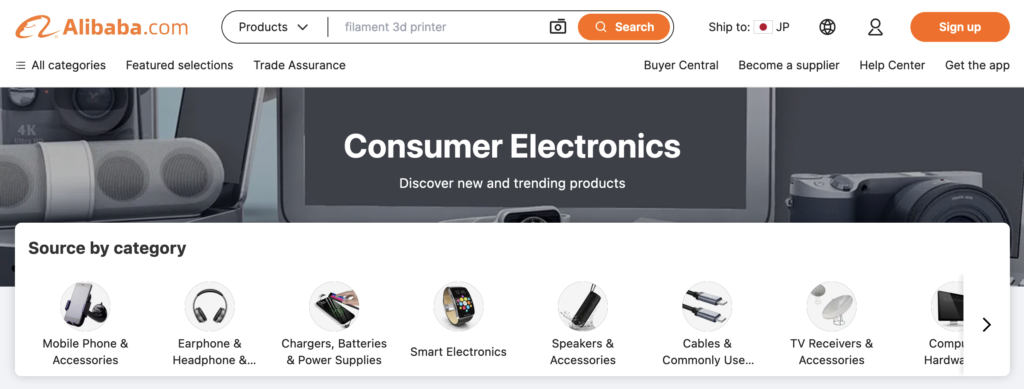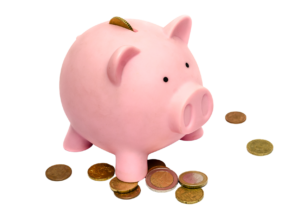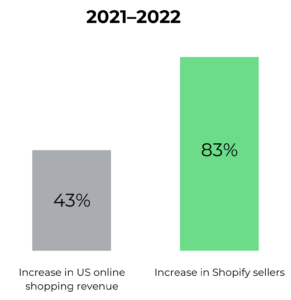The old model of ecommerce is failing
For a long time most small and mid-sized ecommerce businesses have thought it unnecessary to develop their own unique products. Most businesses have been content with riding the ecommerce wave and to resell existing articles that they find on websites like Alibaba.

With a seemingly endless supply of unique designs, and a boom in demand, the reselling model has indeed worked well for many sellers. But this is now quickly changing.
Just in the last two years we have at our agency seen a large influx of ecommerce sellers that are looking to design brand new products. Whereas a few years ago we mainly worked with startups, ecommerce businesses have now taken over as our most common client type.
But why this sudden interest in developing new products instead of using the tried-and-true formula of reselling?
The reason for increased demand in new product development
While as designers we might be tempted to think that the increase in demand represents some newfound appreciation for what we do, there are in fact pragmatic business explanations underpinning this change.
During the pandemic there was a sharp increase in demand for online shopping as people could not, or were afraid to, leave their houses. Accompanying this increase in demand, there was an even sharper increase in the number of ecommerce sellers.

Many people had founds themselves without a job looking for a new source of income. Others saw the pandemic as an opportunity to reevaluate their life and move towards an occupation which provided greater autonomy.
With the increase in demand and the relatively low investment needed, for many, starting an ecommerce business became the natural next step. It was perceived as a way to take back control and to start earning again.
These solopreneurs almost always came into ecommerce investing their own personal finances, which meant that they were less willing (and able) to create new products from the ground up. For them the tried-and-true strategy of finding a decent product on Alibaba and resell it was the only available option.

Now fast forward to today and we see how the market has been flooded with sellers, all hawking the same product. This has created a race to the bottom where sellers are constantly underbidding each other to win the customer.
A story told in numbers
For those that do not believe my account of the current state of ecommerce, let us take a look at some numbers.
If we compare the total revenue of online shopping in USA 2021-2022 to the two years before that, we see an increase from 1094.44B to 1562.84B, or approximately 43%.
Next we can look at the number of live Shopify stores as a measure of how the number of ecommerce sellers changed during that same period. What we see is that near the beginning of 2021 there were approximately 1.5M live Shopify stores. Two years later that number increased to 2.75M, or by 83%.

In other words, from the beginning of 2021 to end of 2022, we saw the amount of sellers entering the market outstrip the increase in demand for online shopping by approximately two times.
The new winning formula
While it is still certainly possible to find a great product on Alibaba, create a strong brand, and then nail the marketing with incredible ads, this is now extremely difficult to pull off.
What our clients are finding is that it is much easier to invest into developing a new product that serves your target customer better than anything on the market.
It does not need to be a ground breaking new design either. Often times the path that we have seen work best is to find an existing product that is selling well, and then improve it in some small but meaningful way.

To achieve this our most successful clients read Amazon reviews looking for common complaints that could be addressed with a better product design. Even if the end-goal is to sell on a personal website, Amazon can help sellers understand exactly what their new product needs to be.
Product design increases company valuations
When you sell a product from Alibaba you do not hold any intellectual property. This means that most likely there will be many others selling the same product.
You could setup an agreement with the factory to be the exclusive seller of that product, but you would still not get the intellectual property rights.

When you invest into product design this changes completely. In that case you get to own both the design, and any related patents that you decide to apply for. This increases the valuation of your company as now a potential buyer is getting something non-replicable when they purchase your business.
Also a business with their own intellectual property is more defendable than one without. If you are reselling a product from Alibaba a competitor that undercuts you in price could pop-up at any moment. If you have your own product protected by a design patent or utility patent, this is not the case.
Happy ending for consumers
I have laid out a few of the reasons for why investing into product design is becoming an attractive choice for more ecommerce sellers.
As we have seen there are some strong business reasons for this, but my hope is that end consumers will also benefit from this change. It is not difficult to see how this would be the case.

With increased investment into product development, hopefully, products will be of better quality. The quality could manifest itself as improved usability, nicer aesthetics, or improved durability. Hopefully all of these will move towards a positive direction.
My ultimate hope is that the increased competition between sellers will result not only in more different products, but actually better products.